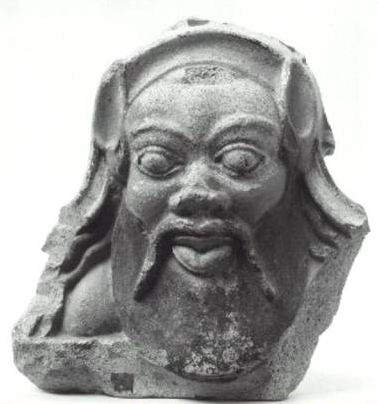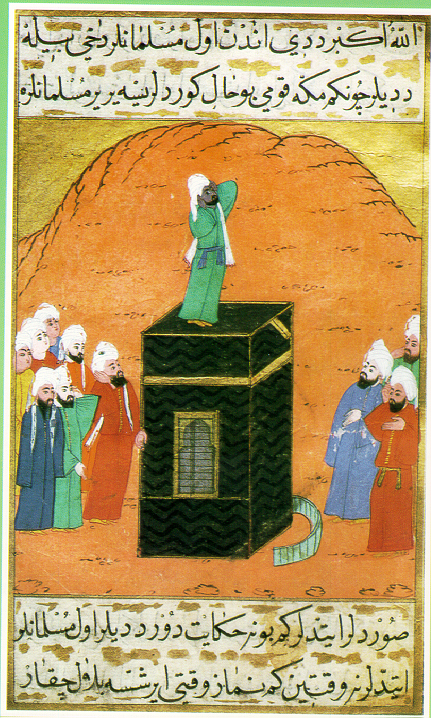History
التاريخ
BEFORE THE HIJRA |
| Head-statue of Socrates depicted as an African, although historians say that he more than likely had European features |
The point of divergence in the Inshallah series begins in 400 B.C., when Socrates escapes from Athens and goes to Egypt, where he continues to espouse his philosophical viewpoints. Other Greek philosophers also escape to avoid persecution and establish their own schools of philosophy.
 |
| Head-statue of Pharaoh Haaibre, also known by his personal name, Aleksindres. Recent archaeologists and historians say that he had Ancient Greek features instead of Egyptian.. |
Nearly 64 years later, Alexander III of Macedon begins his campaign against the Persian Empire. During battle (presumably in the Siege of Gaza in October 332 BC), he loses a leg and decides to stay in Egypt and rule from there. He is declared a son of the Egyptian deity, Amen, and takes on the title "Pharaoh Haaibre Setepenamen"(“Jubilant is the heart of Re, Chosen of Amen” ). He eventually marries a princess from the Kingdom of Kush and has two sons.
/battle-of-zama-57e158965f9b586516d78c44.jpg) |
| Carthaginian War Elephants under the command of Hannibal Barca attacking Roman soldiers. |
Sometime in 202 B.C., an alliance between Alexandrian Egypt and Carthage destroys the Roman Repulic, which removes the only European power that would have challenged any outsiders from conquering the rest of Europe.
Almost two centuries later, Jesus of Nazareth, otherwise known as Isa ibn Maryam, is born.
SPREAD OF ISLAM
| Abu Bakr and the Prophet Muhammad travelling to Yathrib (Medina) from Mecca |
Eight centuries after the fall of Rome (610 AD), Muhammad receives a vision from the Angel Gabriel and recites verses that would eventually become part of the Qu'ran. Muhammad begins his journey from Mecca to Medina (622 AD) and the start of the Hijri Calendar begins. After the start of a new religion called Islam, Muhammad forms the Treaty of Khibar, which establishes the Jewish state of Judea and a non-aggression mutual assistance pact between Jews and Muslims. When Muhammad died ten years after the Hijra (632 AD), in-fighting occurred between his followers. Bilal, an African convert to Islam, was able to rescue the daughter of Muhammad, Fatima, and escaped to Abyssinia (Kingdom of Aksum) and sought protection.
As a direct descendant of Muhammad, Fatima was able to continue spreading her father's teachings and a form of Islam, Fatimite Islam, arose and spread throughout Northeastern Africa. This resulted in a unified Islamic alliance between Abyssinia and other groups of people that posed a challenge to the Egyptian Empire. Eventually, Egypt was defeated and a Muslim-influenced dynasty (the Fatimite Caliphate) was established. A major cause in the victory over Alexandrian Egypt was a bubonic plague that occurred during that same time [A possible parallel event that combines the real-life Plague of Justinian and the Plague of Emmaus]. The disease would spread from Egypt to other parts of the Middle East and Southern Europe. Muslim Egypt and Muslim Abyssinia became major powers in Africa. Arabic became the most common language throughout Africa and, with the Middle East, the region would remain predominately Muslim, except for Judea. Christianity became a minor religion, with most of its adherents being European and various sects formed with differing theologies.
Despite being revered by the people as the last of one of the Prophet Muhammad's close friends, seeing so much destruction occur caused Bilal to become disillusioned with politics and the way religion was misused during the war against Egypt. On his deathbed, Bilal was reported to have said that he received a vision from the Angel Gabriel to go west.
 |
| Map of Bilalistan |
It was around the year 390 A.H. (1000 AD) in which African Muslim sailors discovered a new continent across the Atlantic Ocean [the book never states the exact location]. The new land was named Bilalistan (real-life North and South America), in honor of Bilal. The Africans, derived mostly from Egypt, traded with the natives and began to colonize, causing conflict with the native population and widespread sickness would be responsible for most their deaths due to a lack of immunity from Afro-European diseases. The farthest explored region of Bilalistan was made into a burial site called the Shrine of the Fathers, after the deaths of the explorers at the time (located in real-life western Texas). By 490 A.H. (1100 AD), African colonists were trading with the Aztec/Toltec empires and Bilalistan as an Egyptian colony would be officially established in 1090 A.H (1700 AD) as a collection of four minor colonial provinces (New Alexandria, New Djibouti, Azania, Wichita) united under one name and one banner. However, not all of Bilalistan was completely under the control of Egypt. The surviving native population still controlled the rest of the Bilalistan continent, while a colony named Vinland established by the Norse people existed north of the Bilalistan colony. The Aztec Empire still exists and there are reports of Chinese settlers colonizing an unexplored region of Bilalistan. [There is no mention of the status of real-life South America]
THE UNITED PROVINCES OF BILALISTAN
 |
| Map of the Colonial Provinces of Bilalistan. |
Society
At the start of the 19th Century AD, Bilalian society was ethnically diverse, including Egyptians, Abyssinians, Yoruba, Zulus, Arabs, Moors, Jews, Europeans, and Native Americans. Egyptians, Abyssinians, Arabs and Zulus form most of the upper class as plantation slave owners and hold other high-paying job occupations. West Africans (such as Yoruba and Igbo) and North African Moors predominate the middle and working classes, and are usually employed as instructors, merchants and slave overseers. Herding and ranching are dominated by the Maasai. The lowest jobs are taken by White European slaves. Certain African groups, such as the Danakil, are not slaves, but are looked down upon by other Africans, due to their involvement in "unclean" occupations (example: training baboons and dogs). Citizens, whether male or female, are allowed to vote but slaves have no citizenship and little rights. Many white European slaves are forced to convert to Islam and take Islamic names.
Government and Politics
Bilalistan was originally a theocracy when first settled and formed, but it became a theocratic republic in 1279 A.H (1863 AD) after obtaining some autonomous rule from Egypt. The basic political structure is dual, with an Ulema, a religious hierarchy led by the Ayatollah, and a Senate, an elected/appointed structure led by the Caliph. The head of both branches make up the Executive Branch and are in New Alexandria, and although there is tension between the Ulema and the Senate, the Caliph (appointed by the Pharaoh himself) is the de facto head of the government.
Within the Senate there is a House of Lords and House of Commons, with hereditary power streaming down from the top, and elected power rising from the votes of any citizen, male or female. Citizens are generally veterans or land-owners.
The Caliph has four appointed Governors, and each Governor appoints or is assigned Wakils to manage territory within the provinces. The Wakils adjudicate, act as statesmen, and their children are married off in political unions favorable to the power structure. Their word is law, and the Wakils are all members of the House of Lords. A Wakil must have the patience of Job, the wisdom of Solomon, and the strong arm of Bilal.
 |
| Map of The Estate of Dar Kush, east of the Estate of Berhar. |
Laws must be ratified by majorities in Lords and Commons, and both the Ayatollah and the Caliph. Secular laws can be overturned by a two-thirds majority of the Ulema. Religious laws can only be overturned by the Ayatollah, or the Pharaoh.
In general, the branches of government at this point in Bilalistan's history are: Executive (Dual: Caliph and Ayatollah), Legislative (Lords and Commons), Judicial (Sacred and Secular). There is definitely overlap between these areas, and it gets very messy at times.
Animals
Muslim explorers brought exotic animals to Bilalistan, most notably the Savannah buffaloes, which were imported by the Zulu in order to carry out hunts. Most dogs are considered impure due to the prevailing Islamic culture, with the possible exception of Greyhounds in New Alexandria, and Zulu Ridgebacks in the Zulu kraals. However, many forms of monkeys are kept as pets. Baboons, (or thoths, as they are known), are used to track down runaway white slaves, often with brutal consequences.
WEIGHTS AND MEASURES
Bilalian weights and measures are modifications of ancient Egyptian standards. The royal cubit is interpreted as about 18 inches. A digit is about an inch. A kite is approximately an ounce. Ten kites equal one deben, 10 debens equal 1 sep.
